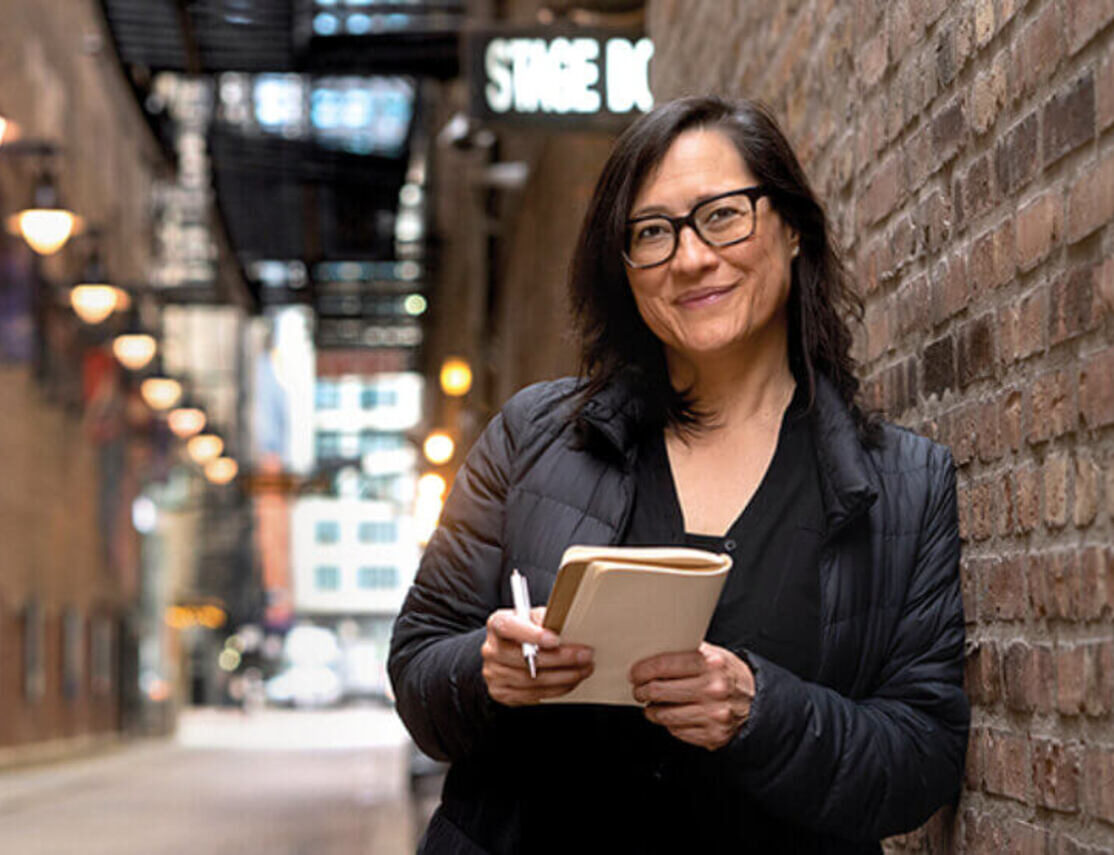- What initially ignited your interest in journalism?
I got hooked when I started working as a copy clerk at the Chicago Sun-Times as a sophomore
in high school in 1985. My mom was dating Roger Ebert and he got me the job. Pure nepotism
but I worked hard to try to earn it. - What role did food play when you were growing up as someone who is part Chinese and part Latina?
My Chinese great-grandfather and grandfather were big Chicago restaurateurs, my Puerto
Rican grandmother was an amazing cook and my mom’s second husband was a French chef
so food was always a big part of our lives. I loved eating and cooking and reading about food so
when I got into journalism, I was thrilled to be able to pursue my interests as a reporter. - What motivated you to write your book?
I had already investigated the origins of many of these foods in my three decades as a journalist
so when a friend urged me to pitch it as a book to a new University of Illinois Press imprint
focusing on Midwest culture, I decided to give it a try. As I got into the research I realized it told
a much bigger story of immigrants and their innovations and contributions to Chicago culture. - What is your favorite Chicago food?
I love jibaritos best. They represent a real melding of Chicago and Puerto Rican culture using
fried green plantains as the bread in a sandwich. - Food plays a big part in your work and is central to your podcast, Chewing. What do you think food communicates about different cultures that often get lost in translation?
I think food reminds us that we all want comfort and that breaking bread together can break
down boundaries and connect people. People who are diametrically opposed on some things
can often agree on their love of cooking and nurturing others and even preserving nature while
doing it. I found that out when I had hunting mentors who didn’t share my politics but shared my
love of nature and love of cooking. - What are some misconceptions people have about the culinary traditions of a certain culture?
People often have monolithic views of food cultures not understanding how diverse, say,
Mexican, Indian, and Chinese cooking can be from region to region. - As a food enthusiast who appreciates diverse cuisines, how do you approach learning about and respecting cultural sensitives, such as dietary restrictions or taboos, when exploring new dining experiences?
I try to understand where those restrictions come from and how they shape the cuisine. I always
respect anything that has stood the test of time in any food culture and I try to appreciate it too. - On your show ‘Curious City’, you place the community at the center of the stories you tell. What have you heard from everyday people about what they think about what is reported about the communities that they live in and how they are governed?
I learned from ‘Curious City’ that people really want to understand what is happening in their
communities and to demand accountability. We had so many great questions that taught me
things and got me to ask questions of officials that I wouldn’t have asked. People are curious
and they love bonding over shared experiences and wonder. - What role does food play in shaping social interactions and relationships within a culture?
It can bring people together and give them a common reference point and a sense of identity.
- Can you share examples of how food traditions have evolved or adapted over time within a particular culture?
Chinese food in the US has gone from bland, pasty, and homogenous to often fiery, diverse,
and intense. I have loved diving into the way it was originally designed to help Chinese
immigrants survive as restaurateurs feeding white people to becoming a way for immigrants to
comfort and delight each other with flavors from home. - How do food festivals and celebrations serve to reinforce cultural identity and heritage?
They can remind people of traditions and bring them together and teach the next generation.
- How do factors such as climate, geography, and historical influences contribute to the development of a region’s cuisine?
Cultural taboos, the kinds of food a certain terroir produces, and technological restrictions and
innovations will all help shape a regional cuisine. They force people to use certain produce and
prepare it in a way that will be safe and provide year-round sustenance. - Are there lesser-known or underrated cuisines that you believe deserve more recognition for their cultural significance?
I love Central Asian food which is getting more attention in Chicago. Filipino food is finally
getting its due. I wish we had more Malaysian and Indonesian food in Chicago because it’s
delicious. - How has globalization impacted the authenticity and preservation of traditional food cultures?
I think globalization has helped food cultures travel and has helped break that amberization that
sometimes happens where a culture is frozen in time. That’s kind of a shame because I think
those immigrant communities that preserve those traditions have something valuable that
modern versions of that culture can lose. - Are there any current trends or movements aimed at promoting cultural diversity and sustainability in the food industry?
The James Beard Foundation has made a huge push in the last few years to be more inclusive
in its awards and focus and grants. It has also developed leadership awards that help promote
sustainability. - It’s been a few years since the Bon Appetit debacle and the NYT Cooking Allison Roman scandal– how would you grade food content now since we have learned more about the dangers of cultural appropriation in food and recipe development? Is there still room for improvement on that front?
I haven’t read Bon Appetit in a while but I think chefs and publications have certainly started to
become more cognizant of when they are appropriating culture and how they can incorporate
influences. - Now and then, a story about the differences between the school lunches of American children and a much higher-quality meal for French (or another country) children makes headlines. In your opinion, what does that split screen snapshot communicate about how Americans think about food?
The difference between the two cultures’ meals shows an emphasis on speed, cost,
convenience, and heavy food processing vs quality, flavor, care, and freshness. Also, the way
the kids sit at round tables with flowers, serving each other water, and eating in courses says a
lot.

















